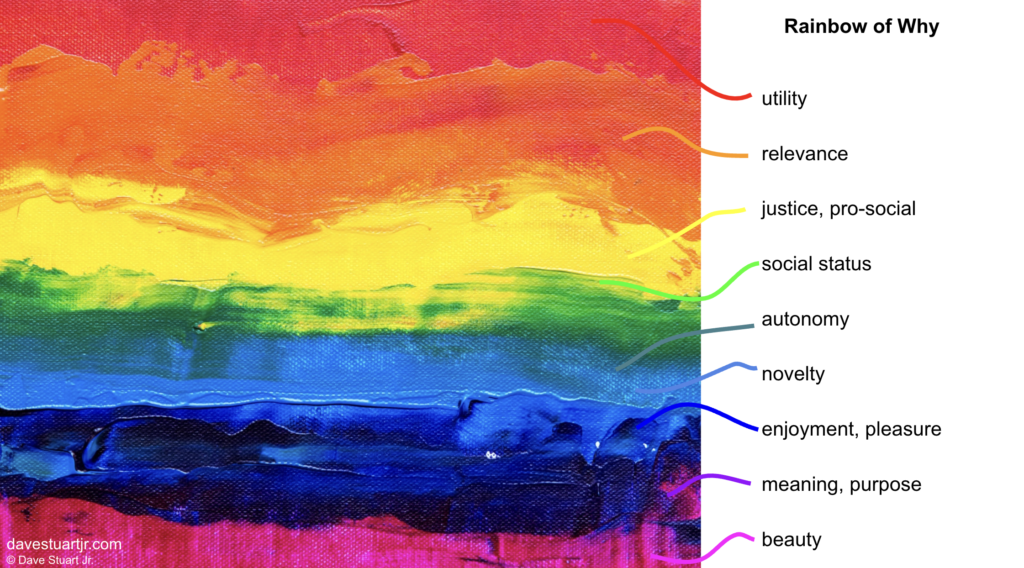I often say in my workshops that when you're looking at the Rainbow of Why, the power is on the bottom.

I think that in school we're way too quick to tell students “when they'll ever use this” (that's utility on the graphic above) and we're way too slow to paint a picture of how what we learn in school isn't just stuff to be used but is stuff that lets us experience pleasure and meaning and beauty.
Here's a great example I came across recently from Rebecca Solnit. She's a prolific writer, historian, and activist — not a scientist. But notice how the language of science — that is, her knowledge of science — infuses these paragraphs and enables them to reach heights that apart from science they would not.
“Growing up, we say, as though we were trees, as though altitude was all that there was to be gained, but so much of the process is growing whole as the fragments are gathered, the patterns found. Human infants are born with craniums made up of four plates that have not yet knit together into a solid dome so that their heads can compress to fit through the birth canal, so that the brain within can then expand. The seams of these plates are intricate, like fingers interlaced, like the meander of arctic rivers across tundra.
Source: Recollections of My Nonexistence, as quoted in James Clear's newsletter
The skull quadruples in size in the first few years, and if the bones knit together too soon, they restrict the growth of the brain; and if they don't knit at all the brain remains unprotected. Open enough to grow and closed enough to hold together is what a life must also be. We collage ourselves into being, finding the pieces of a worldview and people to love and reasons to live and then integrate them into a whole, a life consistent with its beliefs and desires, at least if we're lucky.”
Learning things in science is not just valuable for future scientists. It's not just a thing that'll pay off for folks going into medicine or engineering.
Science is valuable for our students and worthy of their time because it enables them to experience beauty and meaning and purpose and delight that apart from science they'd not quite ever get to experience.
And the thing we teachers have to accept, of course, is that no one else is more responsible for helping our students to see this than we are.
Helping them see beauty in all the content areas is a part of our job.
And a dang good (and hard) part, too.
Best,
DSJR
Nancy Ravaioli says
Thanks. I needed to see this. Sometimes we get too caught up in the grades and the standards and the nonsense. We forget that we should just yearn to know things. It helps us see the world differently. Better.
Dave Stuart Jr. says
Nancy, amen — seeing the the world better. Yes.